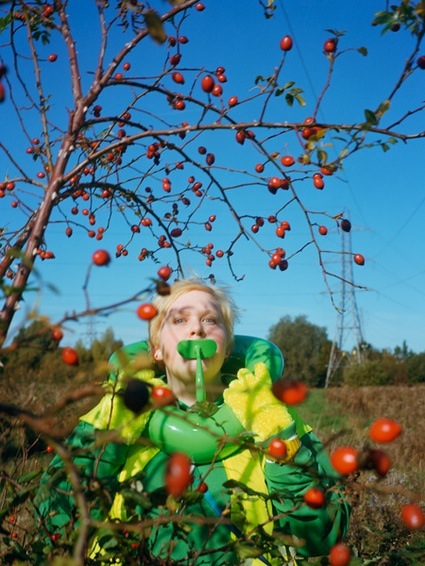 Designs for an Overpopulated Planet, Foragers. Photo by Jason Evans
Designs for an Overpopulated Planet, Foragers. Photo by Jason Evans
In a diagram that attempts to clarify how we think about futures, futurologist Stuart Candy divides one amorphous space of futureness into Probable, Preferable, Plausible and Possible futures. Fiona Raby an Tony Dunne‘s exhibition at the International Design Biennial in Saint Étienne, focused on the area of the Preferable. They believe that while designers shouldn’t decide for everyone else, they can play a significant role in discovering what is and what isn’t desirable.
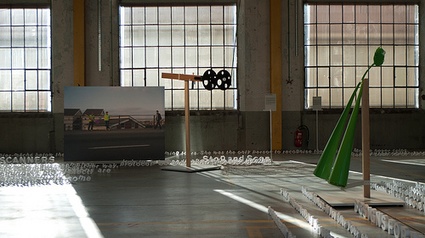 Stop and Scan – Foragers. Photo credit: Fiona Raby and Tony Dunne
Stop and Scan – Foragers. Photo credit: Fiona Raby and Tony Dunne
The design proposals exhibited through models, photographic scenarios, videos and 3D texts don’t have the ambition to tell us what exactly our future will be. Instead, they ask “what if…”, inviting us to reflect on the kind of technologically mediated world we wish to live in.
4 scenarios were shown at the biennale: Foragers is a reflection on the future of food in an overpopulated planet; both Stop and Scan and EM Listeners responds to the UK’s unique tolerance for extreme state intrusion which allows the police to use a lack of privacy laws to create a living laboratory; finally, Afterlife is a domestic product for a time when euthanasia is far more common than it is today.
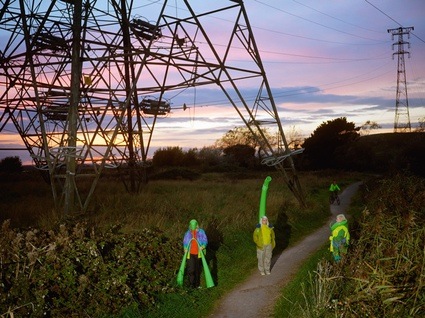 Designs for an Overpopulated Planet, Foragers. Photo by Jason Evans
Designs for an Overpopulated Planet, Foragers. Photo by Jason Evans
Foragers responds to the United Nations’ warning that the world is running out of food. The UN’s Food and Agriculture Organisation calculated that we need to produce 70% more food by 2050 to feed a projected extra 2.3 billion people. Yet, governments, industries and citizens alike continue to ignore the distress signals, over-populate the planet and use up its resources.
Dunne and Raby, Designs for an Overpopulated Planet: No. 1, Foragers
In this first scenario, a small group of hackers, guerilla gardeners, garage biologists, and synthetic biologists take their fate into their own hands, look beyond what is available in food stores and start building their own electronic and mechanical devices to harvest and even digest new types of food that are already available around us. They would use synthetic biology to ‘externalise’ their digestive system in order to be able to digest leaves, grass, pond plants and other things that only the body of animals can process at the moment.
These people are the new urban foragers.
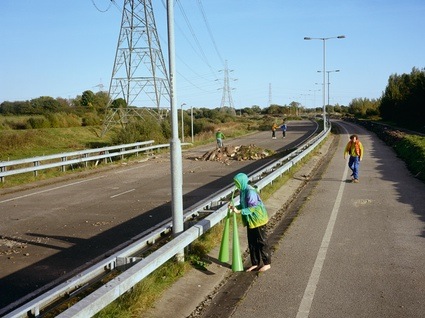 Designs for an Overpopulated Planet, Foragers. Photo by Jason Evans
Designs for an Overpopulated Planet, Foragers. Photo by Jason Evans
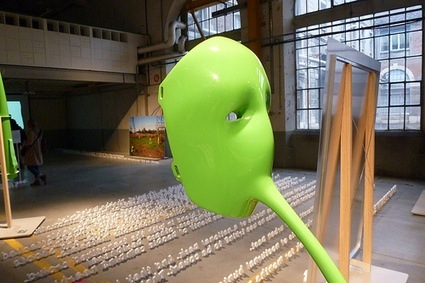
A second scenario, Stop and Scan, comments on the way surveillance has become a convenience in our society. CCTV cameras of course but also loyalty cards, travel cards and Big Brother-style reality shows have acclimatised us to social transparency. Our minds are the last private space we have.
Scientists are working on a number of technologies that attempt to decode what we are thinking. Although this is still a long way off, they would like to be able not only to read our thoughts but to affect them too.
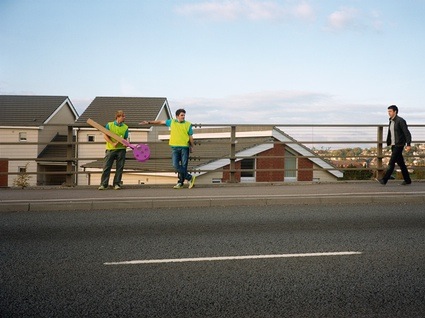 Stop and Scan. Photo by Jason Evans
Stop and Scan. Photo by Jason Evans
In the Stop and Scan scenario the mind becomes a new site of interest for the state, requiring new protocols of ownership, access, protection and transparency. Police carry out random stop and search scans near crime scenes. Using a special scanner, people are shown images that only the criminal could know about. The device is based on brain fingerprinting technology where a scanner detects a characteristic electrical brainwave response whenever a person responds to a known stimulus. If the person being scanned appears to recognise an image, a light glows and they are taken away for further processing. Domestic versions are used by parents on their children. Employers use them on employees.
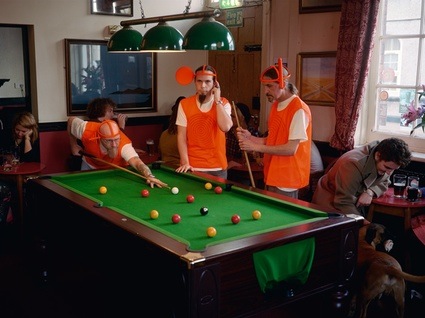 EM Listeners. Photo by Jason Evans
EM Listeners. Photo by Jason Evans
The EM Listeners scenario would bring Echelon to the street. Em-listeners move through public spaces, they scan telephone calls, emails and anything else sent over the spectrum. Their highly visible antennae are intended to deter any subversive activities. Their presence is accepted because it means less risk from terrorists.
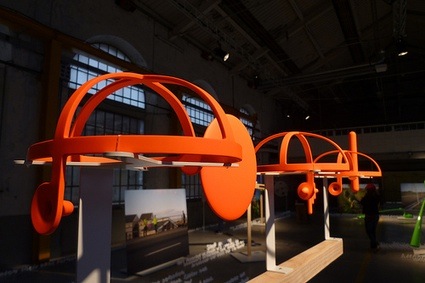
Government workers, civil servants and children have licences to shield their brain activity from scanning – children because they are innocent, and government workers and civil servants because they may know state secrets.
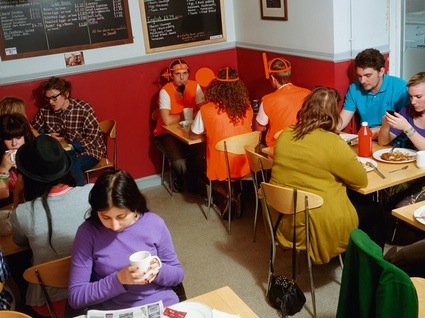 EM Listeners. Photo by Jason Evans
EM Listeners. Photo by Jason Evans
Finally, Afterlife is a domestic device for a time when euthanasia is far more common than it is today. Medical technologies may have extended life spans but they have not increased quality of life. It’s not too difficult to imagine a time when people opt to take their own lives at the appropriate moment. All sorts of variations on suicide machines may evolve to cater for a huge range of emotional, psychological and metaphysical circumstances. Who would have thought that doctors would eventually work with technologists to develop new and humane ways of dying?
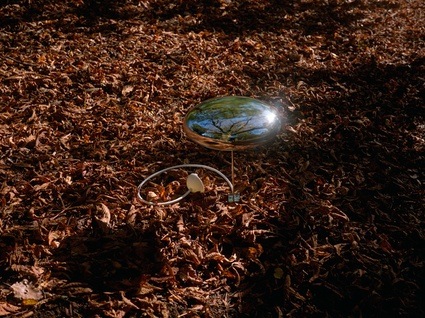 Afterlife. Photo by Jason Evans
Afterlife. Photo by Jason Evans
Between Reality and the Impossible is not just a series of designs, it is also an experiment in how to exhibit conceptual design proposals where the narrative and ideas are as important as the designs. Models, photographic scenarios, videos and 3D texts worked together to sharpen the atmosphere and give additional layers to the scenario.
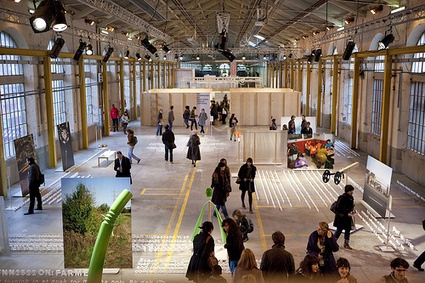 © Pierre Grasset
© Pierre Grasset
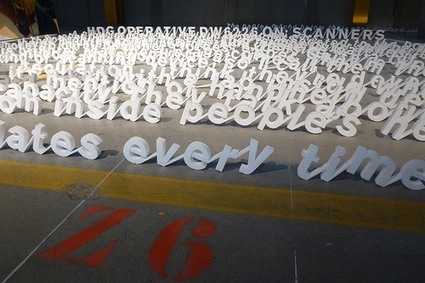
The ideas for each proposal were translated into objects by the designers. Next, writer Alex Burrett (check out his book of short stories, My Goat Ate it’s Own Leg) interpreted them through stories. Jason Evans followed with photographs that make the immediate context of the scenarios clearer. It was then up to the visitors to join the dots and fill in any gaps.
Stand design by Assembly Studio.
Typographic Design: Kellenberger-White.
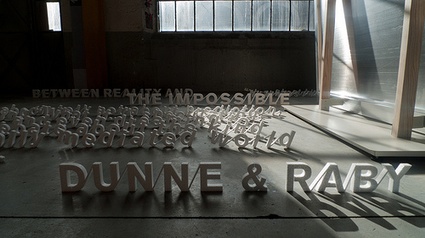 Photo credit: Fiona Raby and Tony Dunne
Photo credit: Fiona Raby and Tony Dunne
Between Reality and the Impossible was curated by Fiona Raby and Tony Dunne and commissioned by Constance Rubini for the International Design Biennial in Saint Étienne, France.
More images on Raby and Dunne flickr stream.
